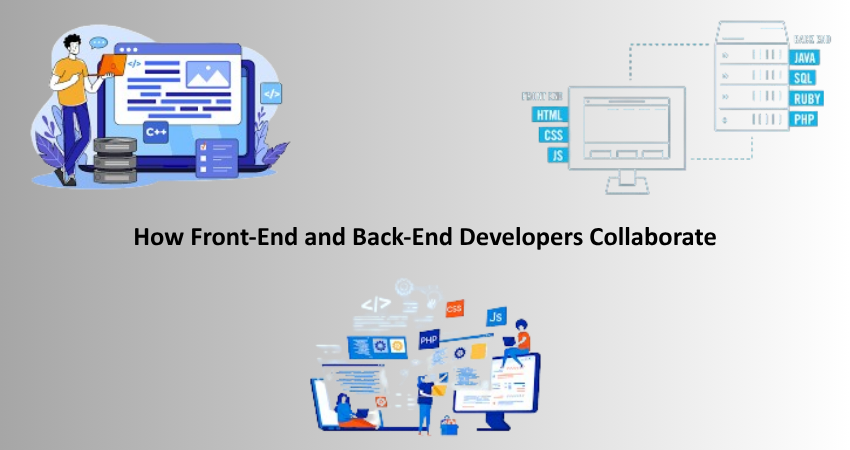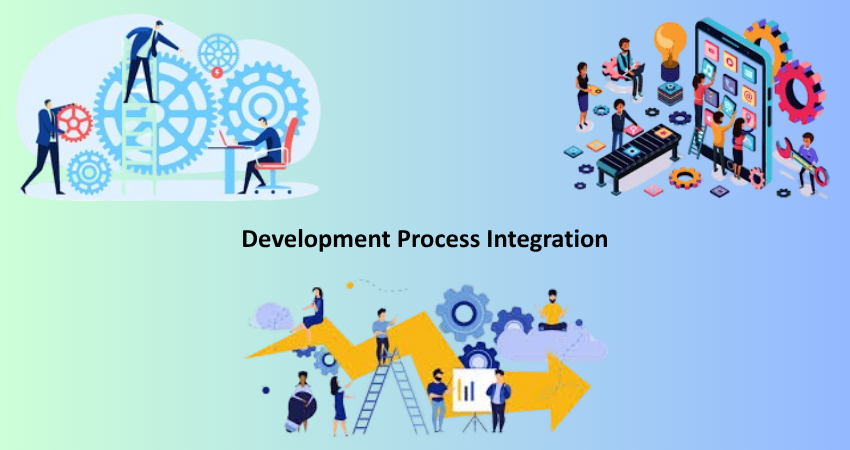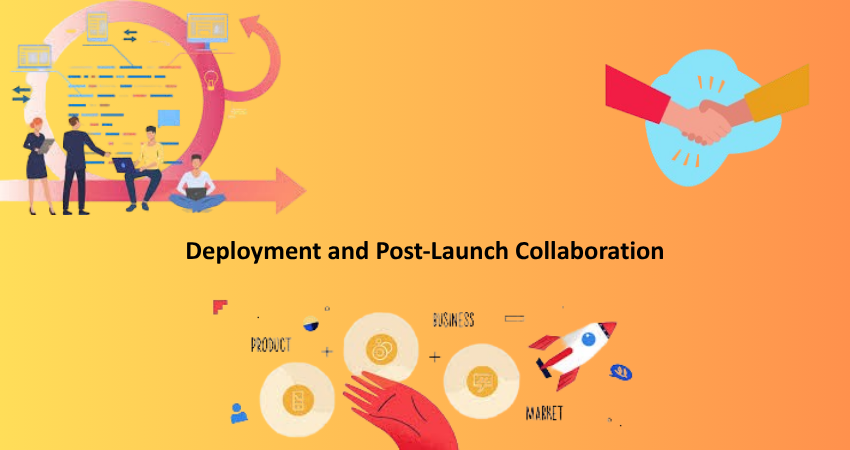
Introduction: Bridging the Gap Between Front-End and Back-End Development
Last but not least, it is the collaboration of front-end and back-end developers in integrating all those technical aspects into the building of completely high-performance digital experiences for end users. Developers from the front end channel in the user perspective-from design to layout and responsiveness. On a whole, the back end evaluates server-side logic, database interaction, and application architecture. Though working mainly on different layers of the web application, it is absolutely vital that they communicate and collaborate effectively for common project success.
Any gap that forms between front and back can lead to misunderstandings, mismatched expectations, and integration issues. This could be resolved when both teams slide together, forming one product, with its very soul defined by every single component working without a hint of error that goes from the user interface to server dialogue. In this article, we will go into front- and back-end collaboration throughout the development cycle, from planning to deployment, and discuss the tools, practices, and interactions that foster cooperation.
Planning and Requirements Gathering
Shared Understanding of Project Goals
Front-end and back-end developers need to share the understanding of what the project is about, who the user is, and what the business goals are before any code enters the picture. Such an understanding is built in early planning meetings wherein both teams discuss the project scope, audience, and technical requirements. Clear documentation and interaction from both sides ensure that everyone is on the same page with respect to functionality, design, and limitations posed by the system.
Front-end developers must know what kind of data they are getting from the back-end, including the structure, timing, and limitations. At the same time, back-end developers need to understand what the front end is expecting in terms of display and interaction with the data. With both parties contributing, a roadmap emerges that merges UI/UX aspects with system architecture.
Defining Interfaces and APIs Together
And the most significant expected results from this phase of planning include the definition of application programming interfaces (APIs), which are the intermediary mainly for front-end and back-end communications. API endpoint definitions, data formats, expected behaviors for collaborative efforts in front-end-and-back-end development will significantly minimize the risks of integration issues for later in the development cycle.
Documentation should capture API requirements clearly and reflect a shared understanding of what each side seeks. For example, RESTful or GraphQL APIs will document all request parameters and response formats, error messages, and methods of authentication. Tools for collaborative API design such as Swagger, Postman, or API Blueprint can help visualize and come to agreement on the interface on both sides. This shared design process puts each side’s name to a common understanding and brings accountability while not allowing either side to make assumptions that would jeopardize the project.
Development Process Integration

Synchronized Development Workflows
Synchronization of developers’ workflows needs to happen whenever possible during an active development cycle. This being said, this refers to the use of common repositories, version control systems like Git, and CI/CD pipelines able to automate integration and testing. Either developers working in the same environment or those maintaining closely monitored branches will be able to catch integration conflicts earlier than later and deal with them before they become bigger problems.
While establishing synchronized workflows, back-end developers often create mock APIs or stub data for the use of front-end developers while the real endpoints are under development. This allows parallel development, thereby reducing downtime and, therefore, being efficient. At the same time, front-end engineers can provide timely feedback on the usability of the API and request changes before the back-end logic is set in stone. In this way, another iteration of feedback can exist: the back end can alter some API structures after witnessing real-world usage and dynamic front-end adaptation.
Component-Based and Modular Architecture
In a componentized and modular way of developing, there are better-defined lines and responsibilities between front-end and back-end teams. For instance, using React or Vue.js at the front-end combined with modular microservices or serverless functions in the backend allows for working in parallel and better integration.
With modularization, every team can focus on building self-sufficient units of functionality, thereby enabling testing, debugging, and refactoring of code independently on either side. In this case, one front-end component fetches and displays user profiles while the back-end microservice authenticates users and gets their data. Each module has a clear contract that supports maintainability and scalability.
Communication and Collaboration Tools
Real-Time Communication Platforms
Effective communication lays the foundation for successful cooperation. As front-end teams and back-end teams often need to contact each other for updates, inquiries and status reports, they usually rely on real-time messaging systems, whether Slack or Microsoft Teams or even Discord, to facilitate that communication. These systems will eliminate communication lags and allow immediate sorting of issues without waiting for the next scheduled meeting.
Project or feature-specific channels ensure that discussions remain organized and easy to reference. For example, front-end developers should be able to ask questions about API behavior, while back-end developers can provide insight into UI expectations. Regular communications create trust and foster a culture of shared ownership; both sides will then feel invested in the project’s success.
Documentation and Knowledge Sharing
Adequate documentation makes knowledge available to all those involved in the development process. Front-end and back-end teams should keep shared documentation in API Specifications, System Architecture, Coding Conventions, and Deployment Instructions. Confluence, Notion, or GitHub Wikis can be very helpful for organizing and updating collaborative documents.
Documentation makes it easier to onboard new team members, helps keep everyone clear about what they are supposed to do, and ensures that teams follow best practices. For example, Swagger or Redoc can automatically generate readable resource interfaces from code, which is very easily consulted by front-end developers to make it known how to interact with the back-end of a system. Transparent documentation also makes interaction smoother and better in code quality.
Testing and Debugging Together
Collaborative Debugging Sessions
Debugs that crossing front-end to back-end often require joint debugging sessions. The two devs sit side by side in these sessions looking through the errors together, checking logs, and even reproductions of issues. They utilize the available collaborative debugging tools such as Chrome DevTools, Postman, or even some browser-based network analyzers to fulfill the understanding of the request and response cycle, isolating problems.
Debugging in real-time increases the pace of resolution and exchange of knowledge. When a front-end developer sees an API behaving strangely, the back end would determine that the input is not validated on the front end. The problem-solving activities of both sides would normally lead to strong and resilient applications.
Integration and End-to-End Testing
Automated testing is conducted across front-end and back-end functionality. This ensures that the application performs as a whole. Integration tests ensure that the modules are working correctly for one another; end-to-end tests simulate actual user behavior with the entire system. Many tools will allow testing from a user interface down to the database: Cypress, selenium, and so on.
Both front-end and back-end developers need to be involved in writing and maintaining these tests. Such tests would ensure shared ownership and early detection of issues while keeping both ends accountable for user experience. In addition, it allows continuous delivery by enabling safe, reliable deployments through automated validation.
Deployment and Post-Launch Collaboration

Coordinating Release Cycles
Deployment requires very close coupling between the front-end and back-end teams since changes on one side often come in response to changes on the other. CI/CD tools such as Jenkins, GitHub Actions, and CircleCI make the build/test/deploy process a lot more automated, but human coordination is still needed to plan for releases.
Both teams should share their deployment schedules, rollback plans, and feature toggle information for new functionalities to ensure a smooth launch of the features. Staging environments and feature branches will allow teams to test new features under production-like conditions, testing them, and then making them go live. Coordinated releases reduce downtime, broken experience situations, and updates immediately benefit users.
Monitoring and Ongoing Maintenance
Post-launch, both front-end and back-end developers will need to monitor application performance, security, and usability. Monitoring tools, like New Relic, Sentry, and Datadog, are invaluable when it comes to identifying a problem that can arise while a user experiences the system’s functionality. These tools are quite capable of providing real-time solutions around performance bottlenecks, API errors, as well as front-end crashes.
Collaboration among the developers, both front-end and back-end, creates an environment where maintenance tasks, like dependency updates, bug-fixing, and feature enhancements, are done seamlessly. The two groups would convene in sprint reviews, retrospectives, and planning meetings to maintain the evolution of the product according to users’ needs. Future development is always based on true user feedback, facilitating a collaborative culture.
Conclusion: Building Better Together
Successful web applications becoming functional, engaging, and scalable require effective collaboration between front-end and back-end developers. Cooperation, good communication, and mutual accountability are the ingredients to success in any project, from the planning phase through post-launch maintenance. By aligning goals, jointly defining APIs, utilizing common tools, and providing support for testing and deployment, teams are able to break down silos that impede good delivery.
With increased web development complexity, seamless collaboration is increasingly important. Enterprises that cultivate mutual respect and open communication between front-end and back-end teams are poised to innovate, respond to user needs, and get ahead in the experience game. Collaboration, after all, is not merely a process—it’s a mindset that impacts how dev teams envision and build the web’s future.